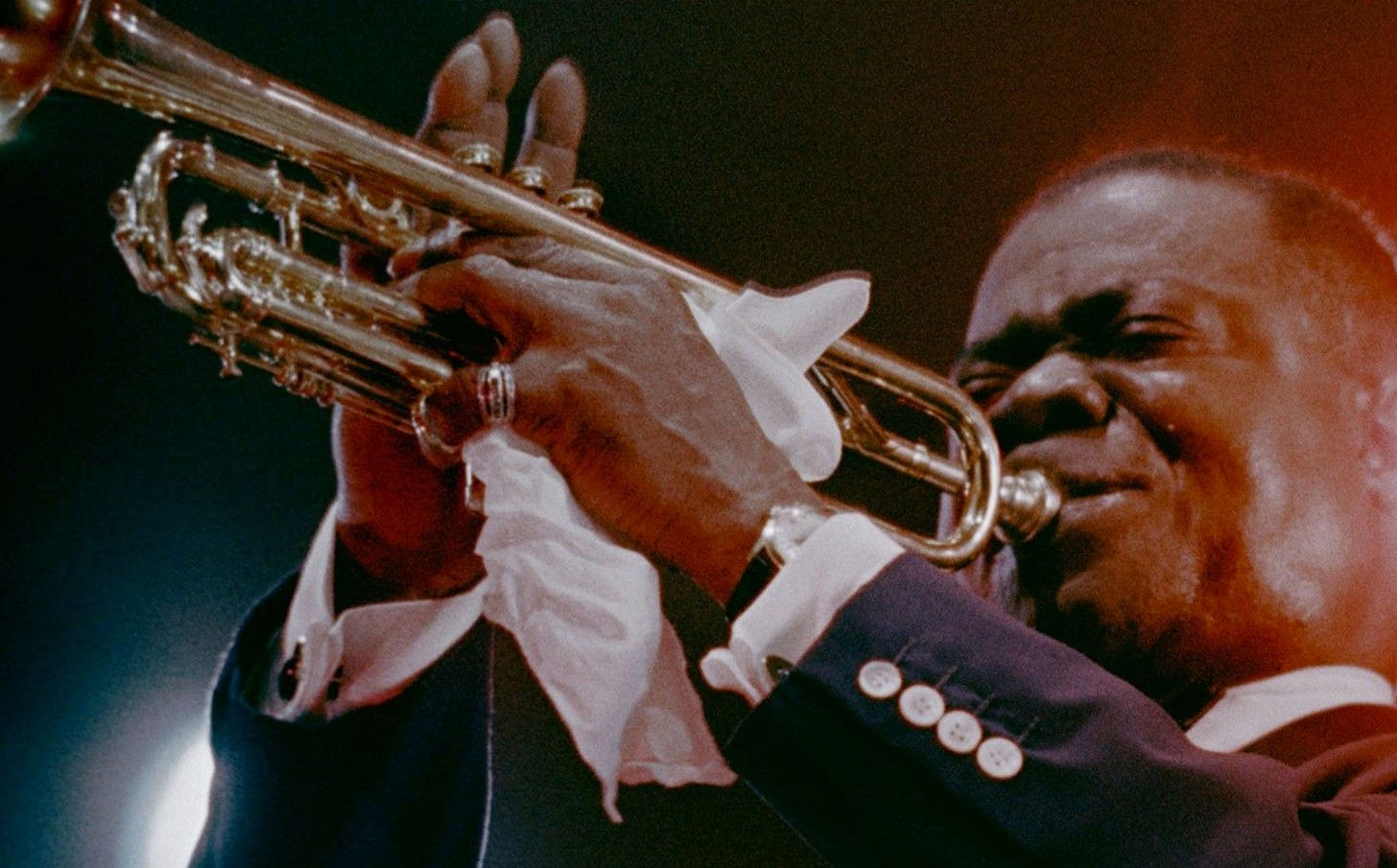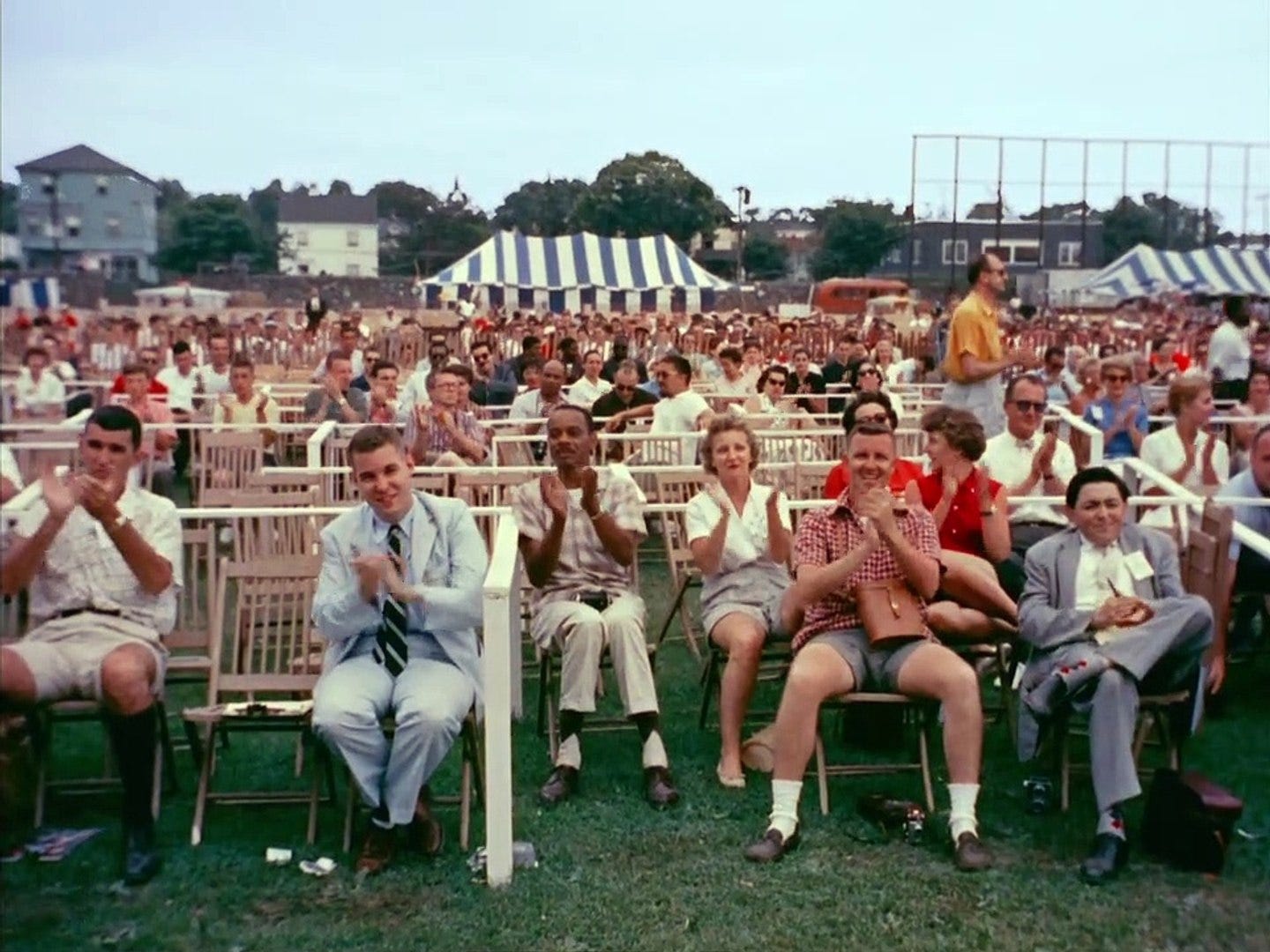Jazz on a Summer’s Day
Bert Stern’s 1959 masterpiece and one of the best concert films of all time.
1958 was a formative year for jazz. Many of the genre’s greatest musicians released some of their best work, which would go on to inspire and revolutionise. John Coltrane released Blue Train, Miles Davis released Milestones, Cannonball Adderley released Somethin’ Else, and Art Blakey & The Jazz Messengers released Moanin’.
However, the period was also one of transition for a country—and, by extension, the world. The post-war economic boom in America, along with collective optimism and naivety, was about to come to a head. For better or worse, life was about to change.
Bert Stern’s Jazz on a Summer’s Day captures that very moment of transition. It’s a concert film, sure, but Stern forgoes traditional documentary tropes, such as narration, talking heads, and information cards, to allow his stunning imagery and world-class musicians to tell the story of the 1958 Newport Jazz Festival.
The film opens with close-up shots of a shimmering, reflective pool of water, resembling the beautiful and unpredictable musical tones that will shortly be on display. These abstract images not only highlight the improvisational aspect of jazz but also induce a sense of calm for the viewer. It’s a beautiful day, and life is good, so to speak.
One of music’s greatest virtues is its ability to bring people together, regardless of race, culture, or creed. Great music has the power to break down walls and remove barriers. Jazz on a Summer’s Day acts as a stirring reminder of what music can—and should—do. It’s no mere historical document; it’s a vibrant, happiness-filled time capsule.
Like the very best films, there are countless small moments of joy. Couples and friends dancing on balconies, groups of musicians jamming on the beach, and the initially bored and unenthusiastic audience during Anita O’Day’s set, who are slowly won over by her sheer talent and charm.
Let’s talk about the music, which is, of course, fantastic. For jazz lovers purely interested in the performances, there’s plenty here to be enamored by. Performances by Thelonious Monk, Louis Armstrong, Art Farmer, and Eric Dolphy make up just a small sample of the incredible musicians on display.
Interestingly, Stern opts to capture much of these performances in intense close-up, almost uncomfortably so. But that’s the point. Stern wants the audience to be front and centre for this critical moment in history when jazz was at its peak.
Another valuable takeaway is how evident the seeds of experimentation are—seeds that would later flourish in the 1960s and beyond. There’s a yearning for art that can push the boundaries of what music can be. I’m unsure if the performances are shown in chronological order, but juxtaposing Chuck Berry’s performance with that of The Chico Hamilton Quartet serves as a way of looking back to the past before turning to the future.
Ultimately, it’s difficult to watch Jazz on a Summer’s Day without the knowledge of what would come next, and how the world would change in just a few short years. The film feels like the sun setting on humanity’s last gasp at achieving utopia. I suppose it’s only appropriate that it ends in prayer, with a stunning rendition of The Lord’s Prayer by Mahalia Jackson.
Thanks for reading! My recommended album of the week is Ella and Louis by Ella Fitzgerald and Louis Armstrong, a genuine classic!







Really nice! Thank you....
A truly great one. I feel like this should be required viewing in history classes (especially here in the US).